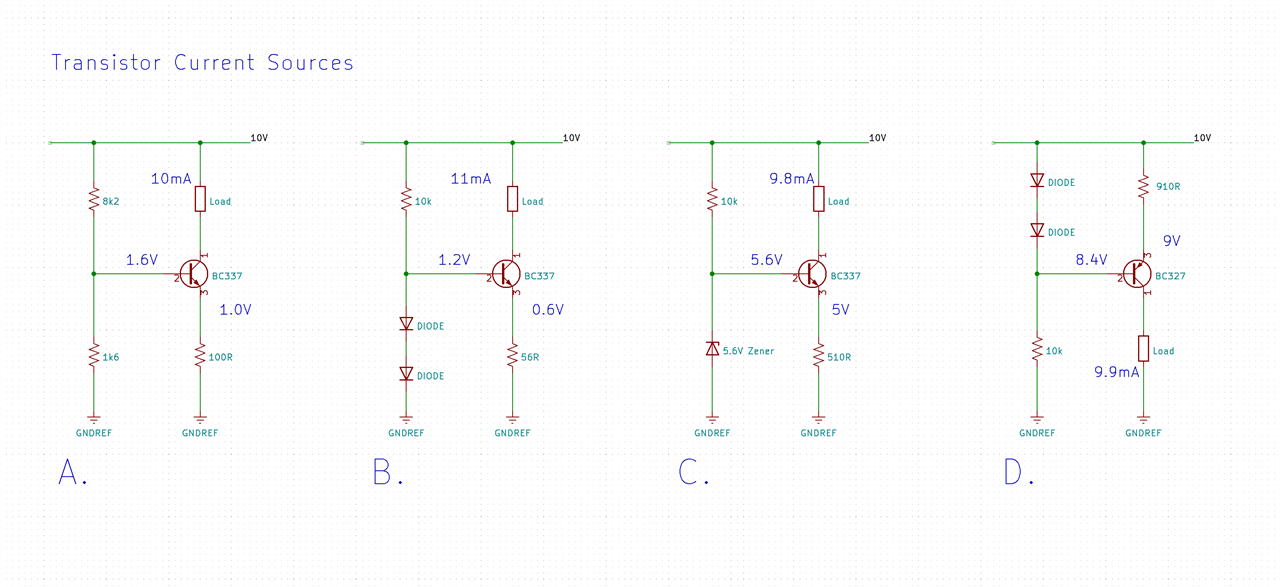Current sources and sinks have applications in many circuits and there are many ways to make them. This blog is a brief introduction to single transistor current sources. Horowitz and Hill cover this material in a more detailed fashion in The Art of Electronics 3rd Edition in section 2.2.6 Current Sources.
The figure below shows four different single transistor circuits. The NPN transistor circuits are current sinks while the PNP circuit is a current source.

Three current source biasing methods for the transistor are shown:
Figure A: A voltage divider is used to set the Vb to 1.6 Volts. This is acceptable as long as the voltage divider is stiff enough but can cause problems if the source voltage or load varies excessively.
Figure B: Forward-biased diodes are used to set Vb to 1.2V.
Figure C: A 5.6V zener diode is used to set Vb.
The biasing resistor is sized to allow the transistor to come into conduction. Knowing the voltage at the base of the transistor, Vb, the emitter voltage is easily calculated since it will be 0.6V below Vb. Ohm's Law can then be used to size the emitter resistor for the desired current. The base current will be ignored since it is much smaller than the collector current.
Using the circuit in Figure B as an example:
Bias Voltage: The two silicon diodes have approximately a 0.6V drop each, for a total of 1.2V
Emitter Voltage: Base Voltage - 0.6V = 1.2 - 0.6 = 0.6V
Collector Current: Emitter Voltage / 56 Ohms = 0.6 / 56 = 10.7mA
Figure D: The circuit uses forward-biased diodes as in Figure B, but for a PNP current sink.
In the short 3-minute video below, the circuit in Figure B is demonstrated on a breadboard.
These circuits perform well compared to a resistor biased from a fixed voltage such as commonly used for LEDs but as shown in the video they are not precision sources. Improved circuits with additional transistors, op-amps, and IC current sources exist. As an example, see the zero tempco constant current sources using the LM334Z in this design for a milliohm meter. Horowitz and Hill also cover improved designs in The Art of Electronics.

Top Comments
-

fmilburn
-
Cancel
-
Vote Up
0
Vote Down
-
-
Sign in to reply
-
More
-
Cancel
-

beacon_dave
in reply to fmilburn
-
Cancel
-
Vote Up
0
Vote Down
-
-
Sign in to reply
-
More
-
Cancel
-

fmilburn
in reply to beacon_dave
-
Cancel
-
Vote Up
0
Vote Down
-
-
Sign in to reply
-
More
-
Cancel
Comment-

fmilburn
in reply to beacon_dave
-
Cancel
-
Vote Up
0
Vote Down
-
-
Sign in to reply
-
More
-
Cancel
Children